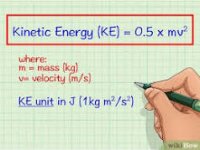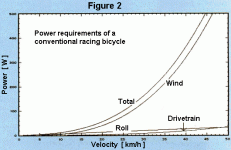Username1
100 W
- Joined
- Nov 26, 2013
- Messages
- 168
I’ve read that doubling your speed requires 8x the power, and I’m trying to understand why. Here’s my current understanding…
Because the speed is doubled you’re encountering (slamming into) twice as many air molecules, which on its own requires 2x the power.
Because the speed is doubled you’re slamming into the air molecules twice as hard, which on its own requires 2x the power.
So you’re encountering twice as many air molecules, and hitting them all twice as hard. These two separate doublings when both applied result in 4x power usage. Can anyone explain where the third and final doubling comes from to reach 8x power usage?
Because the speed is doubled you’re encountering (slamming into) twice as many air molecules, which on its own requires 2x the power.
Because the speed is doubled you’re slamming into the air molecules twice as hard, which on its own requires 2x the power.
So you’re encountering twice as many air molecules, and hitting them all twice as hard. These two separate doublings when both applied result in 4x power usage. Can anyone explain where the third and final doubling comes from to reach 8x power usage?



